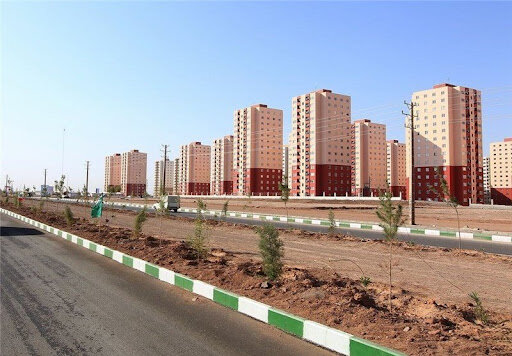6,500 houses to be provided to the deprived

TEHRAN – The Imam Khomeini Relief Foundation and the Islamic Revolutionary Guard Corps will provide 6,500 houses for underprivileged families across the country, IRIB reported on Saturday.
A memorandum of understanding has been signed with the Program and Budget Organization regarding the construction of 25,000 housing units, which is expected to be completed by the end of this year (March 2022), although some of these units have now been handed over, Morteza Bakhtiari, Head of the Foundation said.
Most recently, Imam Khomeini Relief Foundation and the Islamic Revolutionary Guard Corps have signed a memorandum of understanding (MOU) to build 50,000 houses for underprivileged families residing in rural areas.
The Foundation also has provided 9,305 housing units to the deprived families during the Ten-Day Fajr celebrations (January 31-February 10, marking the 42nd anniversary of the Islamic Revolution).
Imam Khomeini Relief Foundation works to provide employment in deprived areas and empowers financially struggling families, other services such as building or buying housing, cultural services, medical services, and other facilities are provided, for example, in the field of treatment, more than 80,000 patients of incurable diseases are currently under the Foundation’s coverage.
Support for villagers, underprivileged
Over the past couple of years, more than two million houses have been built in rural areas and some 500,000 houses have been renovated, as well, Azizollah Mahdian, the Foundation’s deputy director, said in July.
Moreover, the Welfare Organization will provide 35,169 residential units for underprivileged families across the country over the current [Iranian calendar] year.
The construction of 10,000 houses will begin this year, Zolfaqar Yazdanmehr, deputy head of the Organization, said in April.
In the Iranian calendar years 1398 (March 2019-March 2020) and 1399 (March 2020-March 2021), 14,700 and 16,500 residential units have been provided to the deprived, respectively, he noted.
Many efforts have been made over the past couple of years by the government to support villagers and slow down the trend of migration from rural areas to cities.
Rural tourism, agritourism, religious tourism, and ecotourism are alternatives or complementary economic activities that could further stimulate rural development while decreasing rural community dependency on one main economic sector (agriculture, forestry, energy, or mining).
The budget for rural development projects has increased by 2.5 times in the current [Iranian calendar] year compared to that of the previous year.
A total of 80 trillion rials (nearly $1.9 billion at the official rate of 42,000 rials) were allocated this year for the implementation of rural development projects across the country.
The credit will be spent on preparing, reviewing, and implementing the rural plans, improving the rural infrastructure, and the development of the villages.
Currently, 26 percent of the country's population lives in villages, around 39,000 villages have more than 20 households and 23,000 villages have less than 20 households.
Thus, more than 97 percent of the country's rural population lives in villages with over 20,000 households.
Mohammad Omid, the vice president for rural development, said in November 2020 that for the first time in the country, the migration of people from rural areas to cities has reached zero.
The unemployment rate in rural areas has reached 7.4 percent, which has decreased by over one percent compared to last year.
In October 2020, Omid stated that the rural development projects worth 130 trillion rials (nearly $3 billion) were inaugurated on the occasion of the National Day of Villagers and Nomads.
FB/MG

Leave a Comment